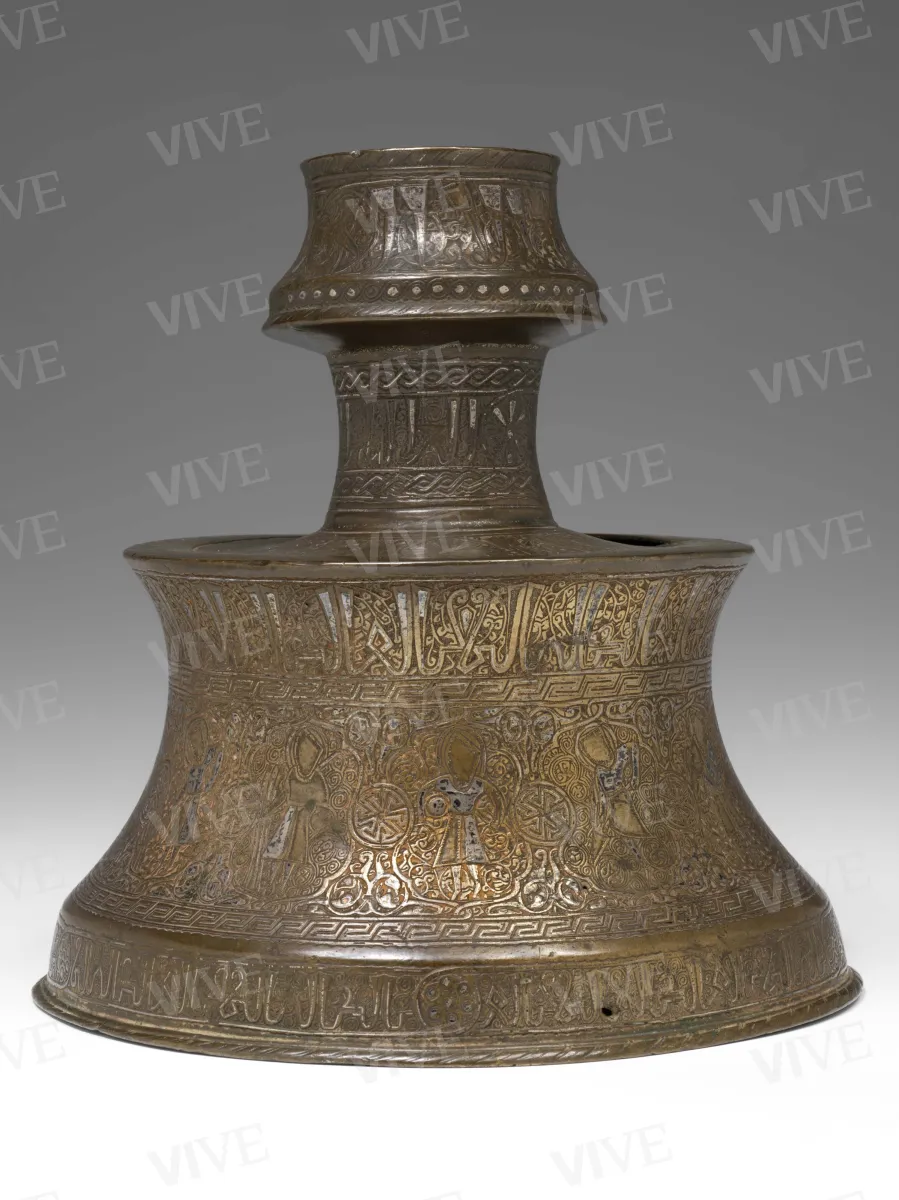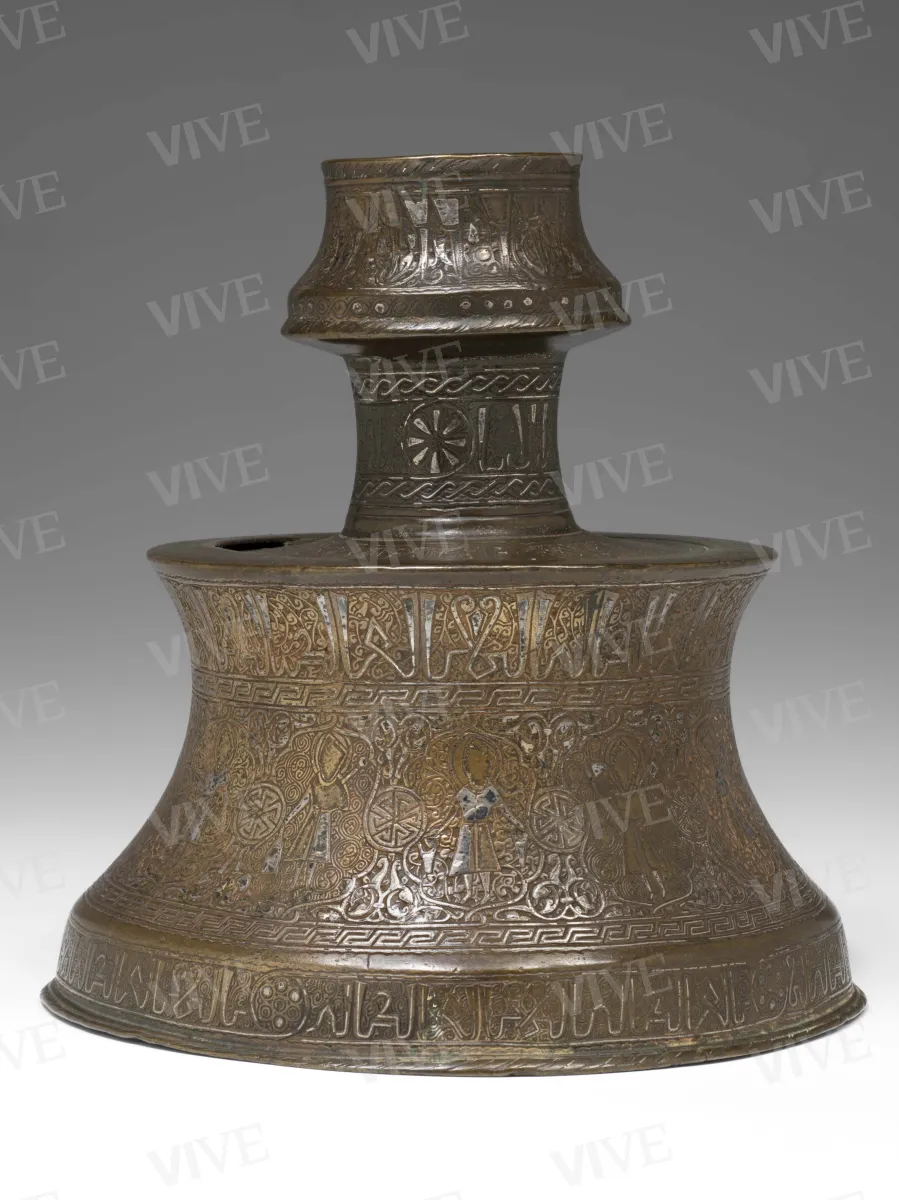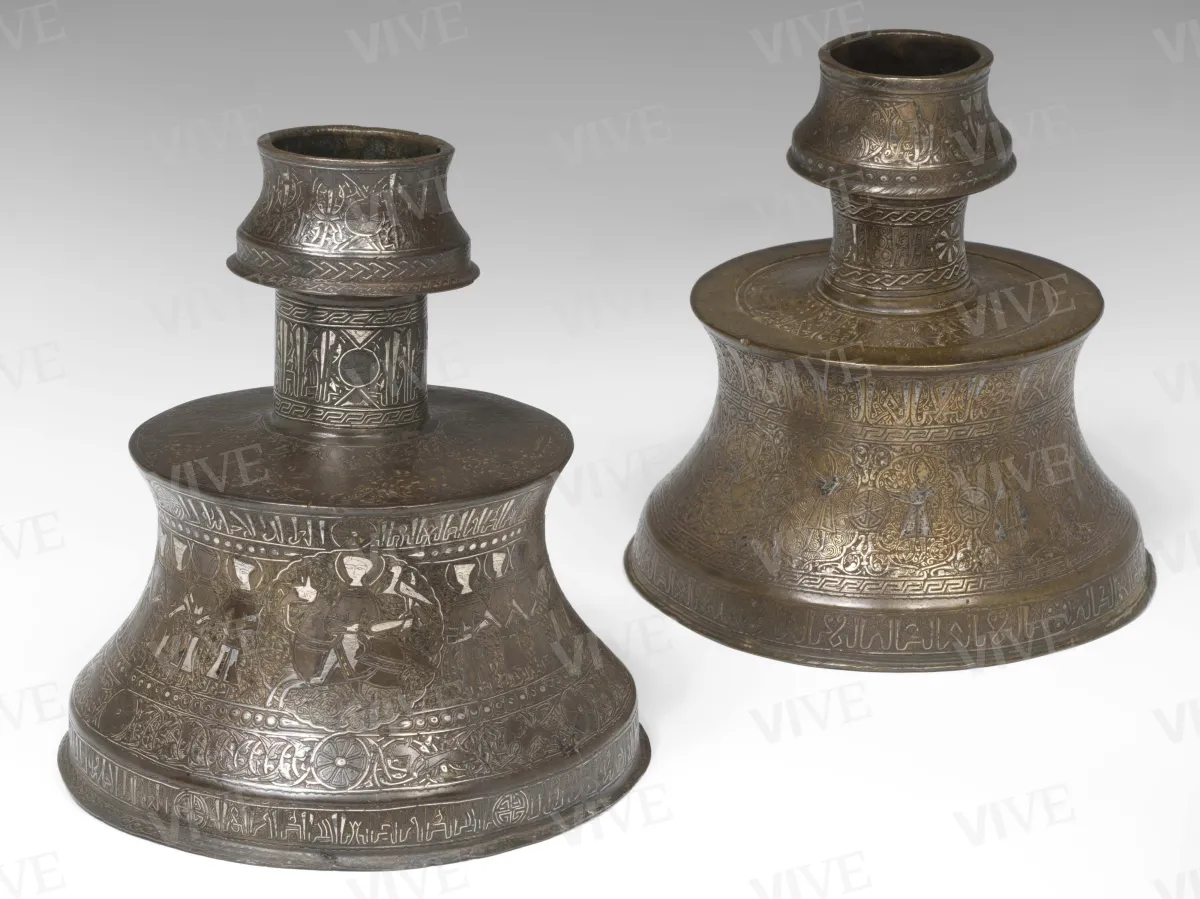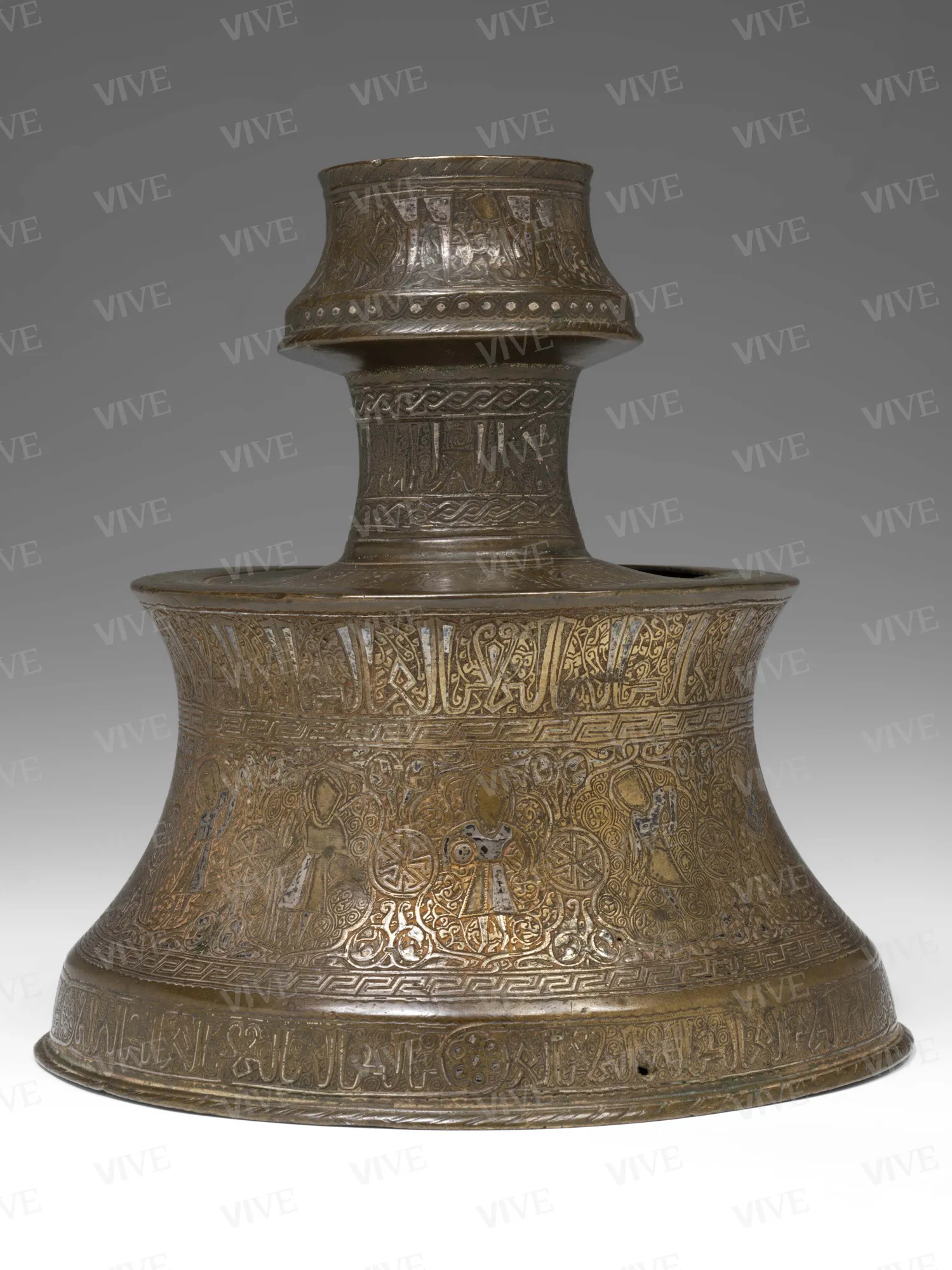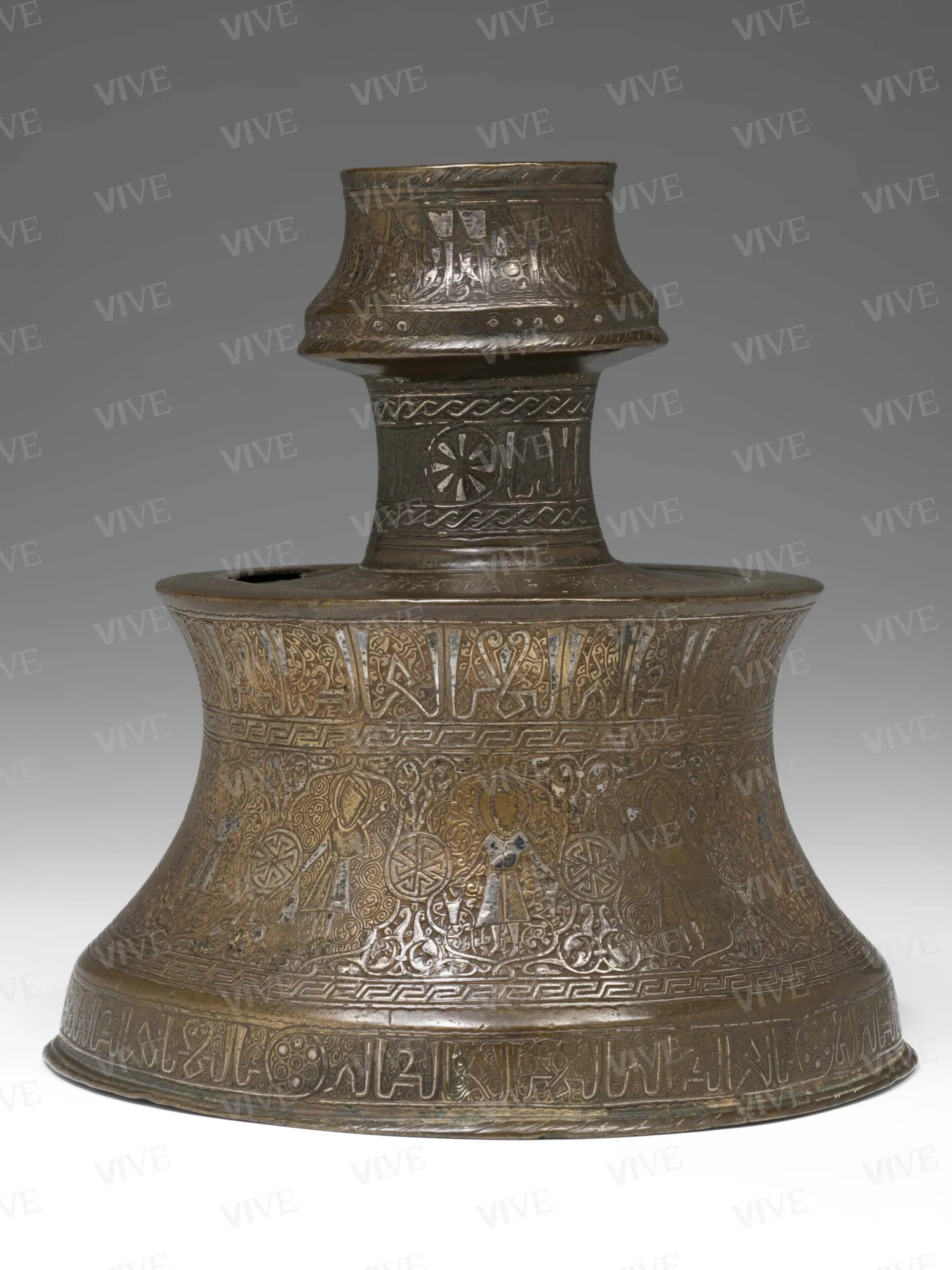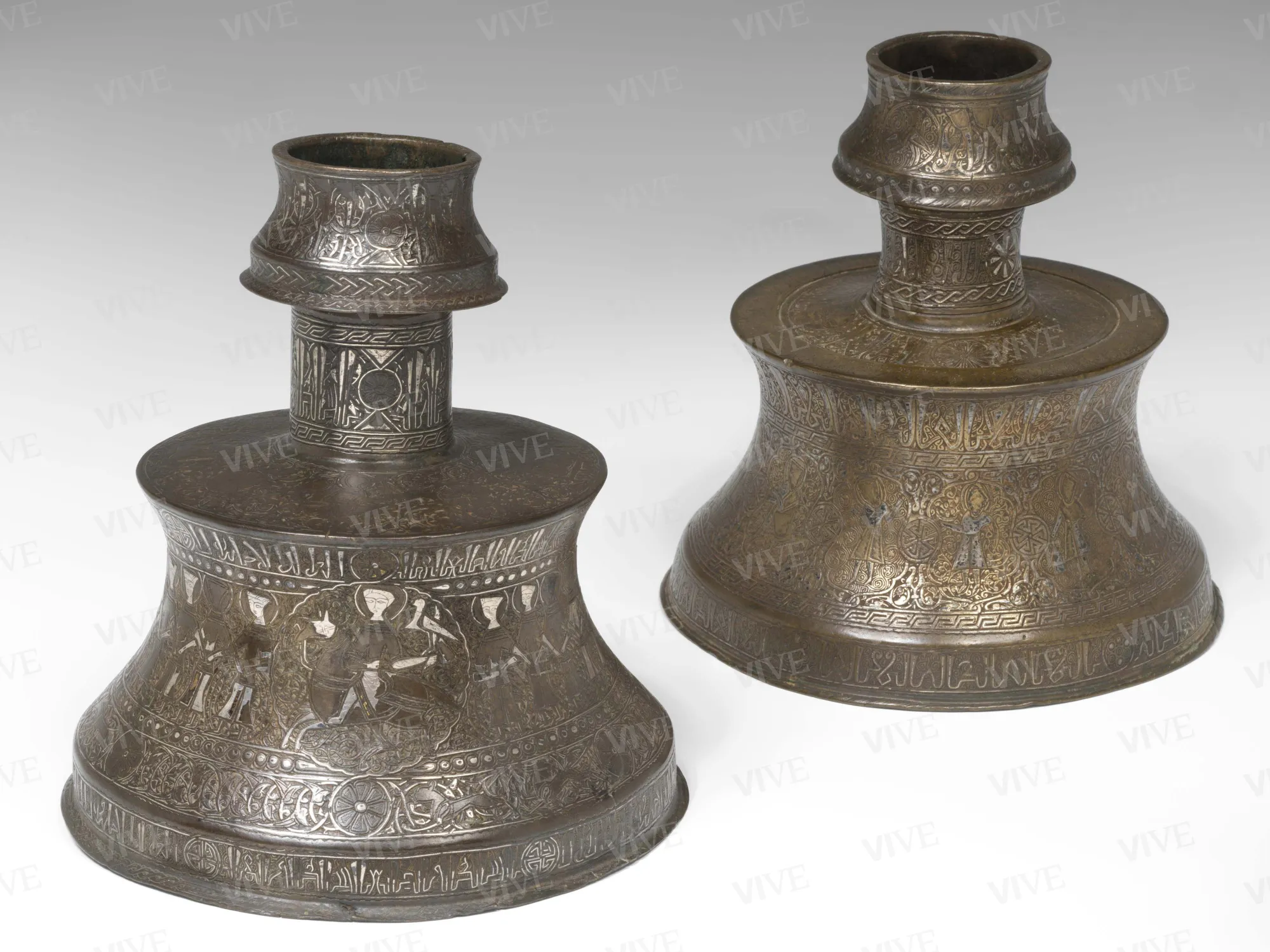Candlestick
Anonymous 13th–14th century
Candlestick with truncated-cone base fluted in the center on a circular well, with cylindrical sconce and truncated-cone nozzle welded to the top. The object surface is entirely decorated with twelve figures representing labors of the months.
Candlestick with truncated-cone base fluted in the center on a circular well, with cylindrical sconce and truncated-cone nozzle welded to the top. The object surface is entirely decorated with twelve figures representing labors of the months.
Details of work
Catalog entry
This candlestick, alongside another similar specimen with a rather different decorative layout, arrived at the sanctuary of Santa Maria in Vulturella (or Mentorella). There is no documentation attesting to when it arrived. Attilio Rossi, author of an extensive monograph on the Sanctuary (Rossi 1905), first published a record of it in which he did not identify either the subject of the decorations let alone the object’s epigraphic apparatus. Instead, it was David Storm Rice who precisely described and rigorously compared the theme of "labors and months," extrapolated in the Mentorella candlestick from Christian motifs derived in turn from Classical and Byzantine art. Rice himself identified several other similarly crafted examples held in Turkish and European collections (Rice 1954). Although Rice proposes an Azerbaijani provenance, it may now be considered more likely that this type of candlestick came from an Anatolian cultural context; there are also those who have speculated that they came from the Konya region, where the Seljuk of Rûm were under Mongol control (Ward 1994). Several similar specimens are preserved in Turkish collections and in particular at the Museum of Turkish and Islamic Art in Istanbul; another specimen of the same kind is held at the Bologna Municipal Museum. Scerrato included this candlestick together with the other specimen held at the Palazzo Venezia museum (similar in form but with different iconographic content) in the volume Gli Arabi in Italia (Scerrato, Gabrieli 1993, no. 507); the candlestick was also exhibited in 1993-1994 in the exhibition Eredità dell'Islam. Arte Islamica in Italia.
If the epigraphic apparatus, made up of laudatory epithets, does not provide dates, places of execution, and the name of a possible executor, hypotheses based on stylistic elements would date the specimen to the second half of the thirteenth century and perhaps to the first decade of the fourteenth. It can also be assumed that the donation made to the sanctuary of Mentorella was made by Christians and that the objects themselves came from a Christian context or otherwise related to Christian artisans.
Michele Bernardini
State of conservation
Good.
Restorations and analyses
A note already presumably drafted at the time of a restoration has been identified in the Museum's archives.
Coats of arms, emblems, and marks
Seven epigraphic bands with the same repeated text, "eternal glory, prosperity, authority."
Band 1: on the candle holder, circular cartouches are filled with figures of harpies;
العز الداٸم الاقبا| ل الشامل و الا| امر العز الداٸم لاقبا| ل الشامل والامر |
"Eternal glory, absolute prosperity, command, eternal glory, absolute prosperity, command";
band 2: along the sconce of the candle nozzle;
العز الداٸم| الاقبا ل الشامل و الا| امر العز |الداٸم
"Eternal glory, absolute prosperity, command";
band 3: inside the outer surface of the plate with the sconce
العز الداٸم الاقبال الشا|مل و الام|
"Eternal glory, absolute prosperity, command".
Provenance
Tivoli, Sanctuary of Santa Maria in Mentorella (or Vulturella);
currently in temporary storage at the Museo Nazionale di Palazzo Venezia.
Exhibition history
Venice, Palazzo Ducale, Eredità dell’Islam, Arte Islamica in Italia, October 10, 1993–April 30, 1994.
References
Rossi Attilio, Santa Maria in Vulturella (Tivoli). Ricerche di Storia e d'Arte, Roma 1905, pp. 78-86, tav. XII;
Rice David, Storm, The Seasons and the Laborsof the Months in Islamic Art, in «Ars Orientalis», I (1954): pp. 1-39 (pp. 16-18, tav. 9b);
Scerrato, in Scerrato Umberto, Gabrieli Francesco (a cura di), Gli Arabi in Italia, Milano 1993, p. 458, nr. 507;
Ward Rachel M., Candeliere in ottone o in bronzo, in Curatola Giovanni (a cura di), Eredità dell'Islam. Arte Islamica in Italia, catalogo della mostra (Venezia, Palazzo Ducale, 30 ottobre 1993-30 aprile 1994), Cinisello Balsamo 1993, pp. 242-243, nr. 130A.

